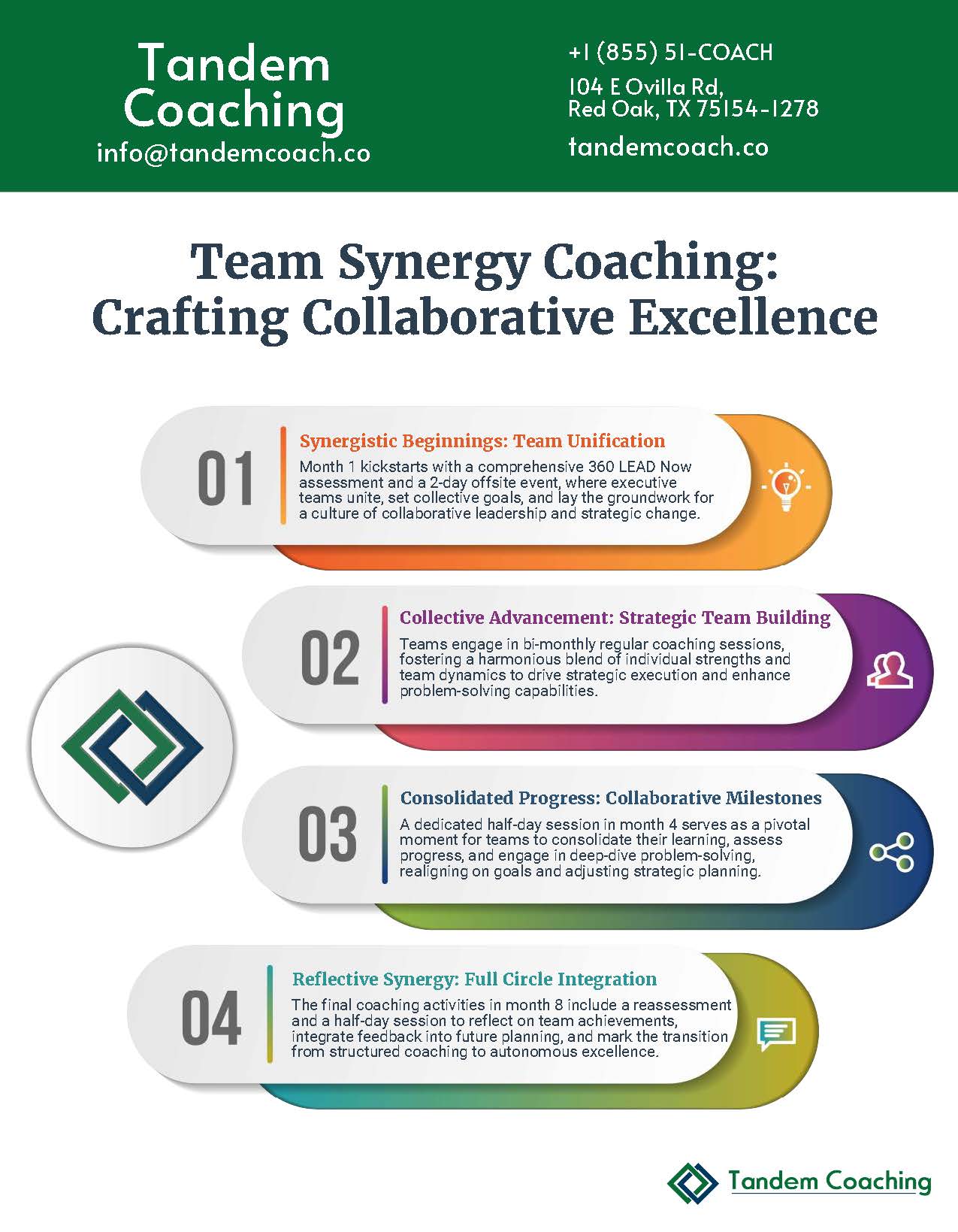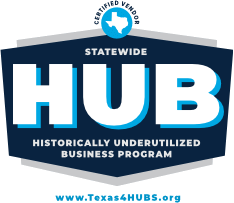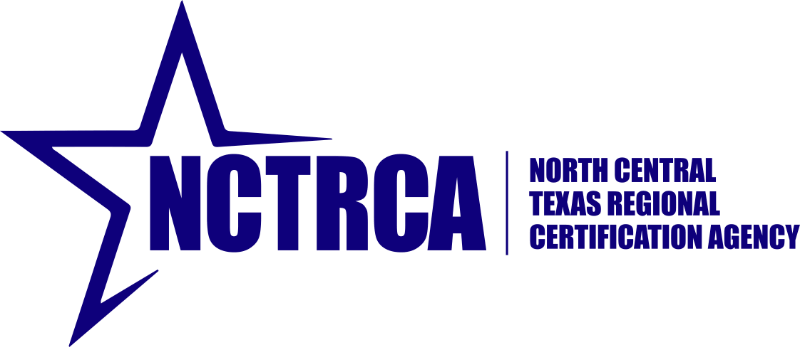Growing a business always involves change, but that process can be stressful. That’s where effective change management activities come in.
These are methods that make the change process easier and more effective.
In this blog, we’ll look at seven tried-and-true change management activities that have been successful in countless organizations. These activities, coupled with our expert advice, will give you everything needed to guide your team through a seamless and efficient change.
Are you looking to improve your management skills and achieve organizational change? Tandem Coaching provides a personalized executive coaching program to help you improve your change management skills and achieve strategic success.
Book a consultation today to get started.
What Are Change Management Activities?
As the name implies, change management activities refer to various systematic methods for executing different types of organizational changes. In short, they’re about preparing your staff, outlining clear processes, and monitoring things to ensure the changes work well.
Here’s why it matters: Adapting to an organization’s technology, process, or goal changes can be difficult and require proper collaboration across various departments. In this case, a well-planned set of team change management activities minimizes interruption and helps guarantee a seamless transition.

Benefits of Implementing Change Management Exercises
Effective change management activities help companies overcome change resistance, update old processes, and improve employee communication and alignment.
Here are the key benefits of change management in an organization:
- Clear transition: Facilitates a seamless shift by giving staff members the necessary resources, support, and training.
- Aligned core goals: Aligning organizational goals with individual and team objectives ensures everyone is aware of their roles in the process.
- Better decision-making: Involves key stakeholders, collects relevant data, and explores different viewpoints to make better decisions.
- Improved communication: Keeps stakeholders informed and in sync, eliminating misunderstandings and conflicts.
- Increased productivity: Reduces downtime and disturbances during change while keeping staff engaged and productive.
- Better risk management: Identifies potential risks and problems early, allowing organizations to plan mitigation strategies.
- Optimized resource utilization: Prioritizes objectives, recognizes resource needs, and allocates resources efficiently.
- Reduced organizational costs: Lowers the chance of project delays, rework, or failures, which results in lower expenses.
- Regulatory compliance: Helps companies implement changes that ensure compliance with the laws and regulations.
On the other hand, poor change management can create hurdles, low productivity, and high staff turnover.
Enjoying this article so far? Consider reading our tips for levels of listening in coaching later.

7 Effective Change Management Activities
Here are eight successful change management workshop activities that teams can practice to ensure a seamless transition:
1. Cross Your Arms the “Other” Way
This activity aims to demonstrate how people can adapt to change and grow comfortable in unfamiliar surroundings. Here’s how it’s facilitated:
- Ask participants to cross their arms naturally
- Instruct them to cross their arms in the opposite direction
- Discuss any discomfort or differences they feel
- Explore unfamiliar circumstances and how they grow comfortable gradually
This activity highlights the human ability to adapt to change and become more comfortable in unfamiliar situations. Participants can learn that with practice, they can overcome early discomfort.
2. The Alien at Dinner
The “alien at dinner” activity is a thought experiment in which participants imagine having an alien at their dinner table who knows nothing about their existing dinner etiquette (workplace procedures). The alien would inquire why things are done the way they are, question the status quo, and drive others to defend their behaviors.
Here’s how to organize it:
- Form five teams of five persons.
- Two people in each group become “aliens,” while three become “humans.”
- Aliens inquire about the workplace’s processes and policies.
- The remaining three will answer the questions.
- After a set time, share the findings with the entire group.
This activity highlights inefficiencies, outdated processes, and unimportant duties, which helps with the change management process. It also encourages teams to think critically about their work and identify more productive alternatives.

3. Fishbowl Discussion
Fishbowl discussions are where a smaller group discusses a topic while observers can provide feedback at key points. Here’s how to arrange it:
- Form a circle of chairs with six persons seated and two empty.
- Introduce a real-life or role-playing scenario for debate.
- Participants who are seated can debate for 10 minutes.
- When the facilitator allows it, observers can join in.
- Finally, ask participants for their thoughts.
It promotes inclusivity, open communication, and understanding of different points of view. Giving observers a voice is a way to make decisions influenced by broader perspectives.
4. Force-Field Analysis
Teams use force-field analysis to identify and analyze the factors influencing a desired change. This leads to a well-informed and effective change management strategy.
Here’s how it works:
- Clearly define the desired change.
- Identify which factors favor the change (0-5 impact).
- Identify barriers to change (0-5 resistance).
- Find the balance of key drivers and barriers.
By identifying and assessing both driving and restraining forces, individuals and groups can create more efficient plans to overcome obstacles and achieve goals.

5. Bounce Back
This activity teaches employees that businesses can overcome obstacles and encourages them to embrace change.
Here’s how to arrange it:
- Pair up staff members and give each pair a rubber ball.
- Have them bounce the ball back and forth for a few minutes.
- Discuss whether they were worried about the ball not bouncing back.
Organizations, like bouncing balls, can overcome change-related barriers. If employees embrace change and understand their organization’s resilience, they can manage the process more efficiently.
6. Simulation Games and Role-Plays
Simulation games and role-playing activities give employees a controlled and safe setting to experience and practice change management strategies.
These change management workshop activities, which simulate real-world scenarios, help individuals develop problem-solving skills, empathy for other viewpoints, and confidence in their ability to manage change. This experiential learning method creates a deeper awareness of the change process while offering employees the tools needed to adapt and prosper.
7. Metaphor Toolkits
Metaphor toolkits are effective for communicating change. Here’s why: they help simplify, clarify, and convey your message while appealing to emotions, values, and imagination.
Think about your audience, context, and aim while selecting suitable metaphors. Use them selectively, consistently, and creatively to underline crucial ideas, be coherent, and pique interest.
Monitor and measure the impact of your metaphors through feedback and surveys to ensure they effectively bring positive change.

Change Management Activities for Remote Teams
Here are some change management activities for teams working remotely:
Virtual Suggestion Boxes
Create a digital suggestion box for anonymous feedback and ideas from your remote workforce to promote inclusivity and open communication.
Make sure to follow up on suggestions to show that their feedback is valued.
Recognize and Celebrate Achievements
Keep morale up and reinforce positive results by acknowledging and celebrating small wins and milestones.
For example, you can organize virtual appreciation events to promote motivation, celebrate achievements, and nurture the community.
Build Support Networks
Create peer support groups or buddy systems to help team members manage changes together.
Encourage virtual teams to collaborate and share best practices to create a helpful community and facilitate knowledge transfer.

Tips for Successful Execution of a Change Management Exercise
Here are some tips for executing change management more successfully in a transitioning period:
- Define Your “Why”: Clearly articulate the purpose for the change, pain points, and goals. Create a “why statement” and set success metrics. For more insights, read our guide on change management metrics.
- Find Your “Now”: To start small, choose just one workflow to exercise change. Create demo environments and train your chosen team. Docment FAQs for future reference.
- Empower Your Team: Recognize early successes, give frequent check-ins, and express gratitude. Create momentum for the change and an alliance of pro-change advocates.
- Plan for Future Success: Document best practices, such as FAQs, support sessions, and onboarding strategies, for assured long-term sustainability.
- Measure and Expand Change: Implement the change more broadly, using training and documentation. Provide ongoing support, recognize achievements, and monitor change success.

Challenges in Conducting a Change Management Activity
Change isn’t always smooth – these challenges can potentially disrupt the success of change management workshop activities:
- A lack of commitment from employees
- A lack of effective planning to manage change
- Unexpected issues and barriers that can slow progress
- Conflicts that cause disagreements and stress among employees
- Poor communication, which leads to misunderstandings, rumors, and opposition
- Fear of the unknown, which makes people inherently resistant to change
Feeling overwhelmed? Our coaching can help you improve your managerial skills and drive change. Contact us today for personalized executive coaching solutions.

Frequently Asked Questions (FAQs)
Before we wrap up, here are some frequently asked questions about the idea and execution of change management activities:
How Long Does a Typical Change Management Activity Take?
The length of a typical change management activity can vary depending on its scope, complexity, and desired impact. While it can be difficult to chalk out an exact timeline, many activities can last anywhere from a few weeks to many months.
Setting SMART goals and breaking down the change into smaller, more achievable stages makes it easier to monitor activity progress and ensure timely completion.
How Can You Integrate Change Management Activities into Daily Operations?
To make change management an integral part of your everyday routine:
- Make a thorough plan about how the activities will be implemented.
- Involve all stakeholders and explain how the activities will benefit them and not be a burden on their daily tasks.
- Anticipate and mitigate any potential roadblocks that may affect the daily routine due to the activities.
- Have continuous conversations with all stakeholders to address any issues.
- Celebrate small and big wins to build morale and maintain momentum.
What Are the Best Icebreaker Exercises for Introducing Change Management?
Aside from fishbowl discussions, Alien at Dinner, and the other activities stated above, here are some great icebreaker exercises to introduce change management.
- Human Knot: This exercise promotes problem-solving and teamwork, two qualities necessary for effective change management.
- Two Truths and One Lie: This activity allows individuals to develop a connection and get to know one another.
- Group Brainstorming: This exercise stimulates idea creation and innovative thinking around change projects.
Conclusion – Activities for Change Management
Remember this: successful change management is not limited to just encouraging your team to embrace and adapt to change. It’s also about finding practical ways to help them understand the need for change, such as implementing new activities.
The eight activities mentioned in this blog set a strong baseline for driving change in your organization. In addition, expert executive coaching can help you overcome the challenges of change management and easily meet your strategic objectives.
Whether you’re new to your managerial role, looking for more success, or working to implement change, our skilled coaches can offer the right change management coaching and support to thrive.
Begin your journey towards mastering change management with us – book a consultation today to get started.


















